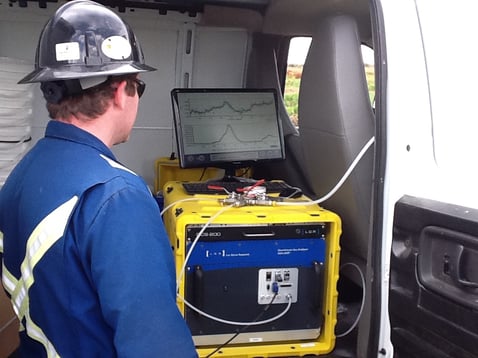You hear it all the time in the news about companies being under fire for releasing contaminants into the environment.. But have you ever wondered how they determine who is responsible for the contaminants?
As experts in environmental forensics, we did an investigation to identify the source of a strange methane gas presence on a property belonging to some landowners. The landowners believed it was coming from enhanced oil production beneath their property. In this blog, we will share our experience and explain why having the right data is crucial.
The Challenge of Distinguishing Naturally-Occurring from Anthropogenic Sources:
Our job was to collect and analyze samples (mostly soil gas samples) to determine if the landowners’ suspicion about the oil production was the source of the methane. Although a big issue was that the soil already contained some natural methane in it as well. So, how do you distinguish between natural and oil sourced methane?
-1.png?width=663&height=257&name=Untitled%20design%20(8)-1.png)
Soil Gas Field Sampling
We conducted field measurements of routine gases, including methane, and sent samples to the lab for more advanced analysis. The samples with the highest field concentrations of methane were further analyzed for carbon and hydrogen isotopes..
As for the results? Well, all tests came back normal, with the exception of a few anomalies that were harder to explain but it was not these samples that made the case open and shut..
The Final Key (Analysis) to Solving the Contaminant’s Source:
It was not until we included some samples going for carbon 14 isotope analysis in the methane that we were able to draw conclusions. You see, petroleum-derived methane would be "dead," or have zero carbon 14, whereas soil gas methane would be somewhere near 100. With the proper control samples from the reservoir, it was very easy to distinguish between the two..png?width=888&height=505&name=Sample%20%231%20(2).png) Figure 1. Source Apportionment graph for carbon isotopes on methane and CO2 samples from site 1 and 2. The sample from site 1 presents a clear biological origin. The sample from site 2 is off the graph in the direction of the arrow, but still presents a clear biological origin.
Figure 1. Source Apportionment graph for carbon isotopes on methane and CO2 samples from site 1 and 2. The sample from site 1 presents a clear biological origin. The sample from site 2 is off the graph in the direction of the arrow, but still presents a clear biological origin.
From our analysis, we were able to determine that the source of the methane gas on the property was indeed naturally occurring, saving the party behind the oil production from having to pay a hefty remediation fee.
This is a perfect example of why having the right data is crucial for any environmental forensic investigation. With the right data and analyses, we can determine the source apportionment of which parties involved should be the ones paying for cleanup and essentially, who is responsible for the contamination.
-1.png?width=418&height=418&name=Untitled%20design%20(9)-1.png)
Any questions about statistical analysis or environmental forensics? Give us a shout here !

-1.png)
.jpg?width=859&name=Archery%20photo%20(3).jpg)
